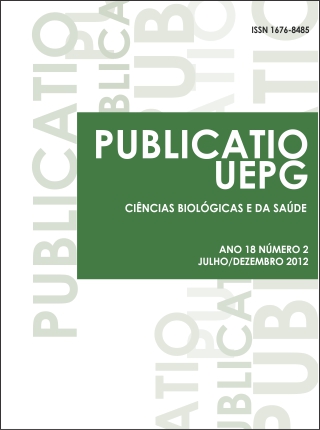Recruitment periods of Tagelus divisus (SPENGLER, 1794) (Bivalvia; Psammobiidae) in the Paranaguá estuarine complex – PR.
DOI:
https://doi.org/10.5212/publicatio%20uepg.v18i2.4923Abstract
Tagelus divisus (SPENGLER, 1794) is a Psamobiidae bivalve of commercial value that inhabits shallow waters, buried in a sandy or sandy-muddy substratum. The present study analyzed the spatio-temporal distribution in an intertidal environment and some aspects of the population dynamics (recruitment) of that species in the Bay of Paranaguá (PR), for which two study places were established: St. I close to the access bars and St. II, in the medium section of the system, in which systematic collections were made, between abril/96 and outubro/97. Larger abundance of individuals was observed (juvenile) (p <0,05) in the more intern section of the estuary (St. II), of waters with mean salinity of 26 and of larger anthropic influence and, in the two places, preferential distribution in the higher tide levels, close to the Spartina belt. Larger recruitment rates were evidenced in the autumn and in the spring, following a reproductive pattern observed for several species of bivalve in the area.
Keywords: Settlement areas. Veneroida. Infaunal bivalves. Parana litoral.
Downloads
Downloads
Published
Issue
Section
License

Este obra está licenciado com uma Licença Creative Commons Atribuição 4.0 Internacional.
Esta licença permite que outros distribuam, remixem, adaptem e criem a partir do seu trabalho, mesmo para fins comerciais, desde que lhe atribuam o devido crédito pela criação original. Este posicionamento está de acordo com as recomendações de acesso aberto da Budapest Open Access Initiative (BOAI).


